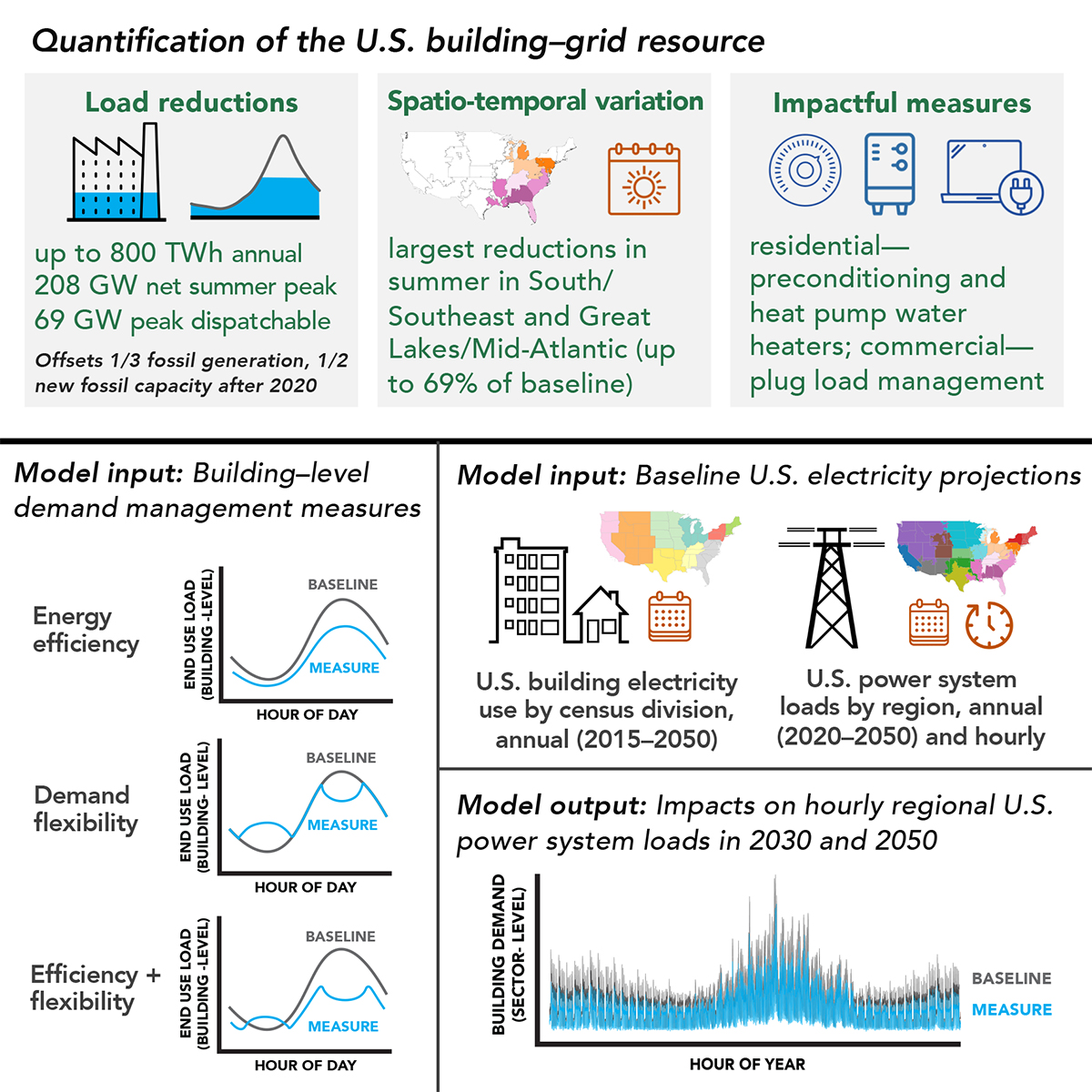This article was adapted from a release developed by the National Renewable Energy Laboratory.
Stor4Build is a new consortium on energy storage for buildings that will accelerate the growth, optimization, and deployment of storage technologies. The consortium will be co-led by the U.S. Department of Energy’s (DOE’s) Lawrence Berkeley National Laboratory (Berkeley Lab), National Renewable Energy Laboratory (NREL), and Oak Ridge National Laboratory (ORNL).
Cost-effective energy storage is necessary for the large-scale deployment of renewable electricity, electrification, and decarbonization—and essential for meeting clean energy goals. Currently, as much as 50% of electricity consumption in buildings in the United States goes toward meeting thermal loads. Thermal energy storage (TES) solutions show promise as a cost-effective energy storage alternative.
“A major goal of the consortium is to develop and deploy thermal energy storage technologies for all communities while accelerating their commercialization and utilization for building applications.”
– Sumanjeet Kaur, Stor4Build’s Berkeley Lab co-director and member of the Berkeley Lab Energy Storage Center.
“Thermal energy storage is a natural solution for buildings that can complement other energy storage technologies. In fact, proper system sizing and controls of these hybrid systems that combine on-site electrochemical and thermal energy storage could result in better overall performance than either system alone.”
There are four research areas identified as foundational to all consortium activities: materials optimization and manufacturing; modeling and analysis; system optimization and integration; and market, policy, and equity. Led by industry-recognized experts at the national labs, the consortium will also include active participants from diverse stakeholder groups, representing industry, utilities, non-profit organizations, communities, building owners, academia, government, and other research institutions. The crosscutting team will address the need of developing equitable solutions to ensure benefits of storage technologies are clear for all communities, including those historically disadvantaged.

Berkeley Lab, NREL, and ORNL are launching Stor4Build, a consortium on energy storage for buildings. (Credit: NREL, in collaboration with Berkeley Lab and ORNL)
“A multidisciplinary consortium like Stor4Build can accelerate the discovery-to-deployment timeline so that thermal energy storage can be deployed on a massive scale to tackle climate change,” said Ravi Prasher, Berkeley Lab’s former associate lab director who was instrumental in the development of this collaboration. “These three national labs have complementary competencies in materials science, device development, demonstrations, and market transformation that will enable overall success.”
“The need for energy storage continues to be a grand challenge to achieving our decarbonized energy future,” said Roderick Jackson, laboratory program manager for building technologies research at NREL. “To overcome this challenge, while also continuing to build American leadership in energy storage, collaborative efforts like those being pursued through this consortium are necessary.”
TES refers to energy that can be stored in a material as a heat source or a cold sink, rather than as electrical energy, and reserved for use at a different time. These solutions can increase load flexibility, promote the use of renewable energy sources, and allow heat pumps to function more effectively and in more extreme climates. The general target of TES systems is to reach installed capital costs of less than $15 per kWh of stored thermal energy, and the consortium plans to develop metrics for identifying optimal performance targets for power and energy density, working temperature, materials and systems costs, round-trip efficiency, lifetime and durability, installation and operation, and maintenance costs.
“By shifting HVAC loads off-peak, TES addresses grid challenges associated with electrification and decarbonization. To become impactful nationwide requires new materials and new methods of integrating storage with HVAC,” said Kyle Gluesenkamp, ORNL senior scientist and Stor4Build co-director. “Stor4Build will bring together the stakeholders necessary to accelerate development and market adoption of scalable TES technologies.”
The consortium plans to complete a community-scale demonstration of technologies to showcase the initial achievements of the consortium, which will serve as a foundation for large-scale deployments of TES, along with electrochemical battery energy storage and systems capable of satisfying both the heating and cooling needs in buildings.
Because there are significant ongoing national efforts to develop and optimize electrochemical storage, Stor4Build will focus major resources and efforts to develop zero carbon, equitable, and affordable building TES technologies and market transformation to ensure their market viability while supporting system integration efforts of existing electrochemical technologies for buildings with TES.
“Buildings impact all of us, no matter where we live, work, or play,” said Judith Vidal, NREL distinguished member of research staff and Stor4Build co-director. “Our homes, schools, and workplaces consume about three-fourths of electricity in the United States, which makes buildings foundational to solving our climate crisis—aggressively, and equitably.”
The Stor4Build Consortium is expected to release a roadmap report targeting technical and market gaps to be addressed to allow the market adoption and transformation needed of energy storage technologies in buildings.
The Stor4Build Consortium will be funded by DOE’s Building Technologies Office as part of an anticipated $30 million effort to advance TES.
# # #
Founded in 1931 on the belief that the biggest scientific challenges are best addressed by teams, Lawrence Berkeley National Laboratory and its scientists have been recognized with 16 Nobel Prizes. Today, Berkeley Lab researchers develop sustainable energy and environmental solutions, create useful new materials, advance the frontiers of computing, and probe the mysteries of life, matter, and the universe. Scientists from around the world rely on the Lab’s facilities for their own discovery science. Berkeley Lab is a multiprogram national laboratory, managed by the University of California for DOE’s Office of Science.
DOE’s Office of Science is the single largest supporter of basic research in the physical sciences in the United States, and is working to address some of the most pressing challenges of our time. For more information, please visit energy.gov/science.



